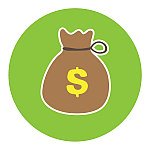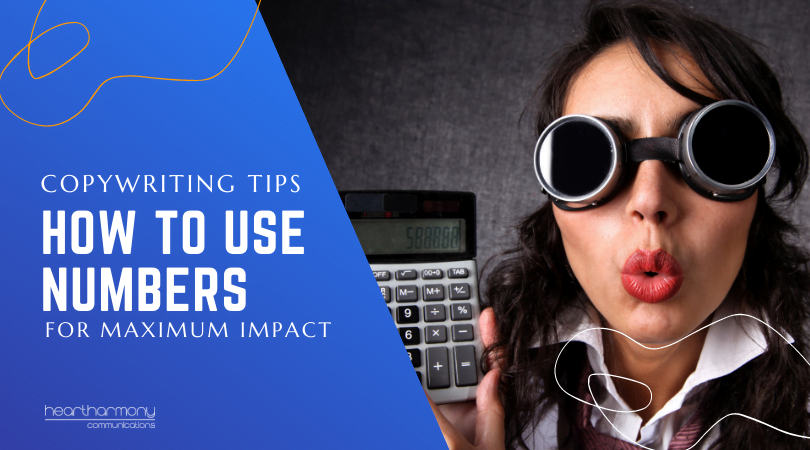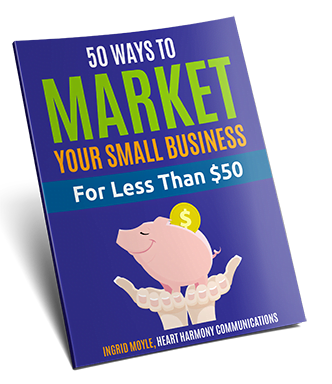Copywriting tips from science on how to present numbers, percentages and money in your marketing to make them more persuasive.
When writing about your business, you want to choose the presentation that gives the strongest results while still providing enough information to enable people to make an informed decision.
Numbers In Percentages
 97%
97%
Many pieces of marketing rely on quoting percentages in order to persuade people to their point of view. The only problem is that using percentages may not be the most persuasive in all situations.
The human brain is not well designed to think in terms of percentages. Here’s a quick example. Ask someone to hold up one finger – you usually get an instantaneous (and often rude) response. Now ask someone to hold up 10% of their fingers. You get puzzled looks, clarifying questions and a slower response.
Same result, but our brain has to work harder in thinking about percentages, and the harder you make someone think the less they will buy.
Persuasive Percentages
Studies have shown that if you present the same result to people in percentages compared to words, often they will change their behaviour.
For example, a study cited by Jason Zweig showed that 79% of all psychiatrists surveyed would release a patient who had a 20% chance of committing a violent act within 6 months. However, only 59% would release a patient when told that “20 out of 100” similar patients would commit such an act.
The patient has the same likelihood of offending – just the likelihood has been presented differently.
Another experiment showed that presenting the results: “Cancer kills 1286 out of every 10,000 people” compared to “Cancer kills 12.68% of people” made people believe cancer to be 32% riskier when given the first scenario.
Why?
Our brain is wired to think in terms of individual objects or people.
When we describe a scenario in terms of the numbers of people affected, or the number of widgets dealt with, then our brain can create a visual image of how many we are talking about.
When we convert numbers into percentages our brain goes into overdrive, and we struggle
How should you persuade people with percentages?
If you have GOOD news to share use numbers not percentages. “9 out of 10 dentists recommend our toothpaste” is more persuasive than “90% of dentists recommend our toothpaste”.
If you have BAD news to share use percentages. “We only have a 1% refund rate” is more persuasive than “Only 1 in 100 people request a refund”.
If your number is near 100%, then it doesn’t really matter either way. “99.997% website
Numbers In Money
 Money hurts. No. Really! Money hurts – Just ask your brain. Brain imaging studies have shown that your brain’s activity during pain is pretty much identical to your brain’s activity when spending money.
Money hurts. No. Really! Money hurts – Just ask your brain. Brain imaging studies have shown that your brain’s activity during pain is pretty much identical to your brain’s activity when spending money.
At the simplest level in our brain, every time we spend money we are getting a little bit of pain with each dollar spent.
If spending money hurts, why do we still do it?
Not surprisingly, this is one of the most popular research areas in neuroscience. Human lab rats are regularly wired up to try and work out why we spend till it hurts.
To spend money, we have to either numb the pain or find something more pleasurable than the pain.
Each purchasing decision is a complex dance of pain and pleasure – with a healthy dose of chemicals and hormones thrown in for good measure.
7 Top Money Marketing Tips
1) Know the Research
- Social rejection actually reduces perceived pain and increases spending. Baumeister, Wall, Mead & Vohs suggest that when we are socially rejected we go numb for a while to block the pain. By numbing our pain circuits, we remove the inhibition to spend – which is why break-ups are usually accompanied by new clothes, haircuts and a swimming pool sized quantity of alcohol. (1)
- Women overspend more in the days just before their period. Another reason to hate PMT is there is a correlation between it and impulse buying, overspending and the inability to exercise financial control. (2)
- People’s willingness to pay (and to spend more) is increased if they use a credit card rather than paying by cash. Buying by credit card doesn’t trigger the pain circuit areas of your brain – so buying by plastic is (according to your brain) pain free. No pain = spending more. (3)
- People differ in how they define the “moment of payment”. Some people define the moment of payment as when they withdraw cash from an ATM which means in their mind, all subsequent purchases are “prepaid” and therefore pain free. (4)
In other words, a retailer’s dream client is a woman with PMT who has just gone through a break-up, and is shopping online with a credit card.
Copywriters understand this pleasure/pain dance, and take steps to either trick the brain into not being triggered, or to drown the pain with pleasure.

2) Remove Dollar Signs
Removing the $ sign in front of an amount, stops the pain triggering the brain (which is why restaurants often don’t put a $ sign in front of menu item prices).
Extra bonus points for copywriting cleverness comes for making the figure not look like money at all 36.5 rather than $36.50.
Higher priced restaurants forgo the cents altogether – to give the impression that cents are not important so you can spend using your Platinum Amex Card to your heart’s content.
3) Add/Subtract Zeros & Commas
If you want a number to look bigger, then add in the zeros after the decimal point
“You save a whopping $150.00”
If you want the number to look smaller, then remove the zeros after the decimal point.
“This can be yours for just $150”
If your number is over a thousand, then adding or subtracting a comma makes the number appear bigger or smaller.
$1,500.00 looks much more expensive than $1500.
4) Separate GST/Taxes & Shipping
If you want a price to look smaller, separate out the cost from any taxes and shipping.
$216.70 (inclusive of GST) appears significantly larger than $197 plus GST.
Whichever way you choose to go, make your treatment of tax and shipping explicit to comply with tax laws.
5) Round Up or Down
Should you round your prices to the nearest zero or should you leave them as precise figures?
Roger Dooley in How to Set the Right Price Every Time explored the latest research and found that if you are asking people to buy on the basis of emotion, fun or ease, then you will get better results if you use rounded numbers – $150.
If you are asking people to buy using reasoned arguments and logic, then precise numbers get a better result – $150.97
 6) Create Bundles
6) Create Bundles
Another way to reduce brain pain is through using pre-packaged bundles and lump sums. Convert the costs to monthly or daily costs that are automatically deducted from a bank account, as these help trick the brain into perceiving less pain as there is no connection between consumption and spending. (5)
Don’t say “Only $1327.” Say “Just $3.63 per day – that’s less than a cup of coffee!”
7) Demonstrate Massive Value
If the perceived value of an item outweighs the cost, then our brains also over-rule the pain.
That is why you will see copywriters and marketers spending a lot of time highlighting the value of a product or service, ideally mentally anchoring the price to something much higher.
“Usually whitening your teeth involves expensive trips to the dentist costing hundreds of dollars. With this pen, you can get five shades lighter teeth in just two days for less than $20”
Numbers In Headlines
Numbers in headlines get higher click-throughs than most other headline types, with women preferring them more than men. This explains the rash of “Top 10 Ways to …” type articles we have seen in the past few years.
There is also research showing that moving towards odd numbers in headlines such as “5 ways to …” or “3 things to know about …” may work better.
Why? People retain 3-5 bits of information at a time, after that they switch off.
Conclusion
Psychology is a funny thing. What works for one person leaves another one cold.
The same with these studies. The only way you can truly know if adding or deleting a dollar sign in your copywriting get the results you want for your business is through testing it and measuring the results.
On a plus, by testing each of these number options you won’t get a whack around the legs to embed your lesson.
References:
(1) Neural Predictors of Purchases, Brian Knutson, Scott Rick, G. Elliott Wimmer, Drazen Prelec, and George Loewenstein, Neuron, 53;147-156,2007
(2) Social Rejection Can Reduce Pain and Increase Spending: Further Evidence That Money, Pain, and Belongingness Are Interrelated Baumeister, Wall, Mead &Vohs, Psychological Enquiry, 19; 145-147, 2008
(3) Women’s Spending Behaviour Is Menstrual-Cycle Sensitive Personality and Individual Differences, Volume 50; 74-78, January 2011
(4) Always Leave Home Without It: A Further Investigation on the Credit-Card Effect on Willingness to Pay, Drazen Prelec and Duncan Simester, Marketing Letters, 12:1, 5-12, 2001
(5) The Red and the Black: Mental Accounting of Savings and Debt, Drazen Prelec and George Loewenstein, Marketing Science 17:1, 4-28, 1998
Additional Sources:
Zweig, Jason “Your Money and Your Brain: How the New Science of Neuroeconomics Can Help Make You Rich” (Simon and Schuster, 2007)
Dooley, Roger “Brainfluence: 100 Ways to Persuade and Convince Consumers with Neuromarketing” (Wiley, 2011)





